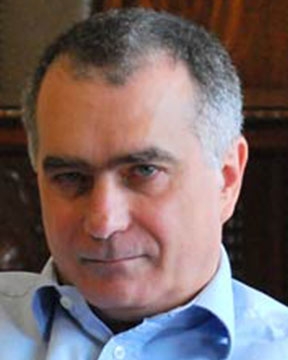



















 |
Jairton DupontUFRGSCapture And Transformation Of Carbon Dioxide Confined In Ionic Liquids Angell International Symposium on Molten Salt, Ionic & Glass-forming Liquids: Processing and Sustainability (7th Intl. Symp. on Molten Salt, Ionic & Glass-forming Liquids: Processing and Sustainability). Back to Plenary Lectures » |
Abstract:Despite a growing number of climate change mitigation policies and increasing investments associated with the capture and storage technologies for CO2, the anthropogenic emissions of this gas are inexorably growing. [1] Hence, there is a growing interest in finding large-scale commercially viable end-use opportunities for CO2 utilization. In the last decade, thermal, electrochemical, and photo-reduction of carbon dioxide to CO and/or hydrocarbon derivatives has grown into a blooming field of research. [2, 3] A simple combination of sunlight, aqueous solutions saturated with carbon dioxide, and appropriate photocatalysts may yield CO (reverse semi-combustion) and/or hydrocarbon derivatives (reverse combustion). [4, 5] Ionic liquids (ILs) are known to solubilize and, in some cases, to activate carbon dioxide by stabilizing radical/anionic species [6, 7] and hence, constitute an attractive material for CO2 capture/reduction.[8] We will present the most recent aspects on CO2 capture by ILs. This involves the formation of bicarbonate, and its hydrogenation promoted metal nanoparticles to hydrocarbons and formic acid, as well as orgono-photocatalytic and electrocatalytic reduction to carbon monoxide. The basic aspects of the multi-roles of ionic liquids in these transformations will be detailed based on experimental and theoretical evidence, particularly in IL aqueous solutions. References:[1] N. Mac Dowell, P.S. Fennell, N. Shah, G.C. Maitland, The role of CO2 capture and utilization in mitigating climate change, Nature Clim. Change, 7 (2017) 243-249. |
|